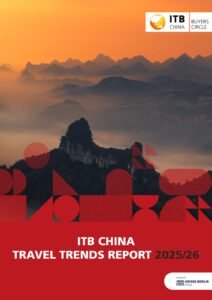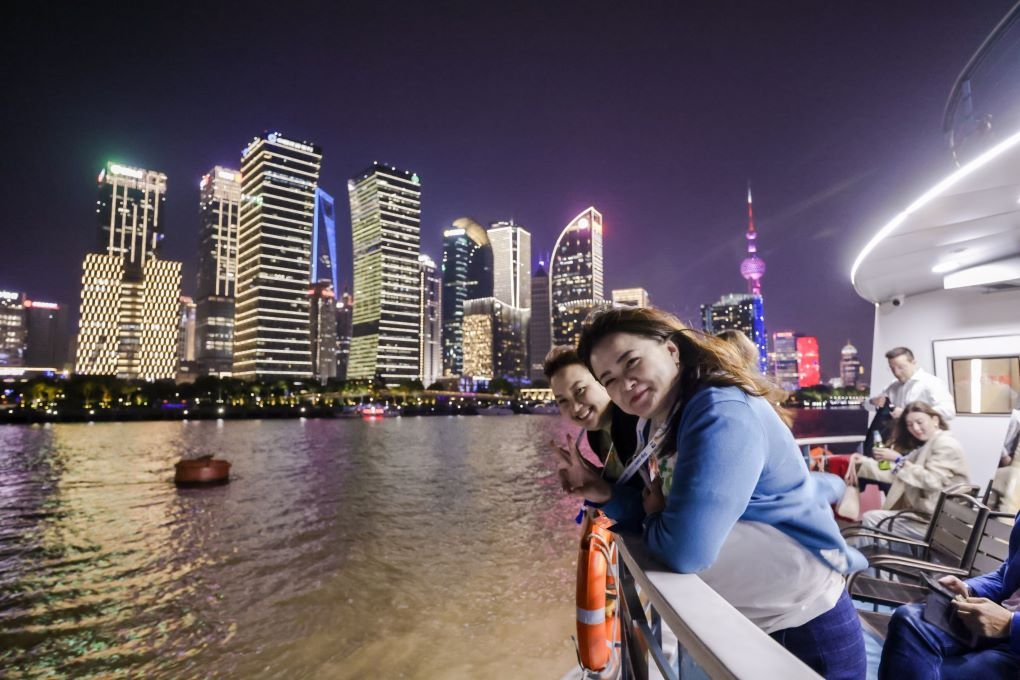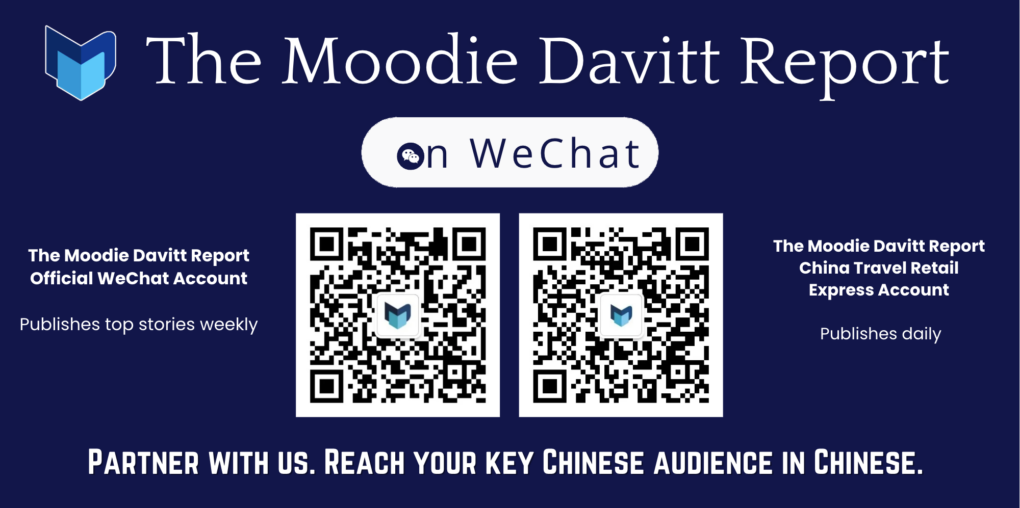Travel Trends
KAYAK Unveils Edinburgh August Travel Trends 2025: How to Save on Flights and Hotels During Festival Season During This Festive Season

Monday, August 4, 2025
When August rolls around, Edinburgh steps onto the world stage, buzzing with culture, entertainment, and visitors from everywhere. The Edinburgh Fringe Festival, the Edinburgh International Festival, and the acclaimed Military Tattoo pull in millions craving the unique buzz only the Scottish capital can create. To make the most of the festivities, KAYAK-your go-to site for travel intel, has crunched the numbers on travel patterns, airfare, and hotel costs during the high-octane festival stretch. With back-to-back festival fun and special events like the Oasis reunion concerts, August is set for unforgettable memories. Even budget-conscious explorers can seize the magic, thanks to insider timing and smart choices.
Flight Searches Soar as Edinburgh Becomes a Festival Hotspot
Edinburgh’s festival season is more than just a local affair—it has become an international draw, and KAYAK’s data reflects this with a notable surge in flight searches. Compared to the previous month, flight searches to Edinburgh increased by 26%, while searches for flights in August 2025 have risen by 8% compared to the same time last year. This uptick in interest highlights the growing popularity of Edinburgh’s vibrant festivals, which continue to draw global attention from both cultural enthusiasts and travelers looking for unique experiences.
Despite the surge in searches, KAYAK has noted a slight decrease in average return airfare, which is down 2% both month-on-month and year-on-year. This offers a bit of good news for travelers still planning their trip to Edinburgh during this high-demand period. However, visitors should note that peak dates—particularly around August 6 to 9—result in average economy return flights exceeding £260, as festival-goers flock to the city to witness iconic performances and events.
For those flying from other UK cities, KAYAK recommends avoiding flights on August 21 and 22, as they coincide with the busy bank holiday weekend, driving up return airfare costs to as much as £105. While these price fluctuations are inevitable during peak festival times, early booking and flexible travel dates can still help tourists secure a better deal.
Hotel Prices Surge Amid Festival Demand but Late Month Stays Offer Discounts
While flights may offer some flexibility, hotel rates during the Edinburgh festival season are a different story. KAYAK’s data reveals a significant increase in hotel prices, with the average nightly rate for August reaching £232—up 17% from last year and 38% from the previous month. Early August sees the highest hotel rates, particularly during major events like the Oasis reunion concerts and the Edinburgh Fringe Festival’s opening days. For visitors looking to stay within budget, the final week of the festival offers a more affordable option, with average hotel prices dropping to £187 per night. This provides an opportunity for travelers to take advantage of a quieter festival atmosphere while saving up to 34% compared to the peak price points.
Given the influx of visitors during Edinburgh’s festival-packed August, booking accommodations in advance is highly recommended. As hotel availability becomes scarce closer to the festival dates, early planning ensures both the best rates and the most desirable locations near festival venues. Additionally, Edinburgh’s hotels provide a wide range of options, from boutique accommodations to well-known international chains, catering to every type of traveler looking to experience the city’s rich cultural offerings.
International Visitors Flock to Edinburgh for Iconic Festivals and Unique Performances
Edinburgh’s festival scene continues to attract visitors from around the world, with international flight searches showing notable increases from countries such as Italy, Austria, and Spain. Among the top countries sending travelers to Edinburgh this August, Switzerland (+14%), Spain (+11%), and Austria (+9%) have seen the biggest year-on-year increases, reflecting the city’s growing appeal as a cultural and entertainment hub.
From the iconic Edinburgh Fringe Festival, which is renowned for its diverse performances ranging from comedy to theatre, to the globally celebrated Edinburgh International Festival, which attracts high-profile musicians, artists, and performers, Edinburgh’s festivals are a magnet for international tourists. The Military Tattoo, with its stunning military displays and performances at Edinburgh Castle, further enhances the city’s status as a world-class destination for cultural tourism.
Festival Tourism: A Boost for Edinburgh’s Local Economy
The tourism boom spurred by Edinburgh’s August festivals is a significant contributor to the city’s local economy. Visitors from around the world not only bring excitement and energy to the city but also support a wide range of local businesses, from hospitality and dining to retail and entertainment. The city’s tourism infrastructure, enhanced by the demand for accommodations, transportation, and leisure activities, plays a crucial role in sustaining the economy, especially during the festival season.
Beyond the economic benefits, Edinburgh’s festivals contribute to the city’s global cultural profile, bringing international attention to the city’s rich history, architecture, and artistic scene. As more travelers flock to Edinburgh, the city cements its position as one of Europe’s most sought-after cultural destinations.
Plan Smart: How Flexible Travelers Can Maximize Their Edinburgh Experience
For travelers looking to maximize their Edinburgh experience without overspending, flexibility is key. By adjusting travel dates to avoid peak periods, visitors can enjoy a more relaxed atmosphere and secure better prices for both flights and accommodations. Additionally, choosing to visit towards the end of the month offers a more affordable stay while still allowing guests to experience the tail end of the festival buzz.
In short, August in Edinburgh gives travelers a cultural treat that few cities can match. The festivals pull in so many people that flights and hotels get pricey, but smart travelers can still find ways to see and do the best things without spending a fortune. From the buzzing Fringe Festival to the spectacular Military Tattoo and a host of other shows and events, the August festivals show off why Edinburgh is a must-visit for anyone who loves history and entertainment.
A little advance planning gives visitors the chance to soak in the city’s beautiful buildings and delicious food, catch world-class acts, and dive deep into Scotland’s cultural heritage— all while sticking to a budget. With the festivals still growing and earning rave reviews, Edinburgh’s summer tourism buzz shows no sign of slowing, ensuring that remains one of the most exciting spots to be in the world.
Travel Trends
Why is Italy Continually Dominating Global Travel Trends? Exploring the Surge in Outbound Tourism, Changing Traveler Preferences, and the Economic Impact on Popular Destinations

Monday, August 4, 2025
Outbound Tourism Surge in 2025: A Global Shift Toward Extended Travel
Between April and June 2025, international tourism experienced a notable upsurge. The total number of outbound trips taken during this period reached 208,988, marking an impressive 11.6% increase compared to the previous months. The growth didn’t stop at the number of trips; the total nights spent abroad also skyrocketed, reaching 1,493,684, reflecting a remarkable 23.9% increase. These figures paint a vivid picture of the growing global trend toward international exploration, with travelers showing a greater willingness to spend extended periods abroad.
This increase in outbound tourism not only reflects a rise in the number of trips taken but also signals a broader shift in how people are approaching travel in 2025. As the world becomes more interconnected, more people are venturing to distant corners of the globe, whether for leisure, business, or other purposes. The extended stays are a clear indication that travelers are becoming more invested in the experiences they seek while abroad, shifting from quick getaways to deeper, more immersive experiences.
Italy’s Unrivaled Popularity Among Travelers
Italy continued to dominate the international travel scene during this period, capturing an impressive 37.9% of all outbound trips. The allure of this Mediterranean country remains undeniable, with its rich history, world-class art, breathtaking landscapes, and unparalleled cuisine consistently drawing millions of travelers each year. Italy’s iconic cities like Rome, Florence, and Venice, along with its charming countryside and coastal regions, are a major part of the country’s ongoing appeal.
Italy’s consistent position as the leading travel destination highlights its continued significance in the global tourism market. The cultural and historical heritage that the country offers, combined with a modern vibrancy in its cities, ensures that it remains at the forefront of travelers’ minds. For many, it represents the ultimate travel experience, blending the past with the present in a way few countries can replicate.
The Shift Toward Non-Rented Accommodations
A noteworthy shift in travel habits was observed in the types of accommodations travelers chose during this period. Over half of the nights spent by tourists abroad—51.6%—were in non-rented accommodations. This significant trend reveals that a growing number of travelers are opting for more personalized and flexible lodging options. Instead of staying in traditional hotels or rental properties, many travelers are choosing to stay with family or friends, or even in alternative spaces such as hostels or shared apartments.
This move toward more informal, sometimes more affordable accommodations, reflects changing attitudes toward travel. Budget-conscious travelers, as well as those seeking unique, more intimate experiences, are driving this shift. It points to a broader trend where flexibility and authenticity are becoming more important than the traditional comforts of hotel stays. As a result, this growing preference for non-rented accommodations could reshape the hospitality landscape, with a shift away from conventional hotels to more diverse, experiential options.
First Half of 2025: A Steady Global Growth in Travel
In the first half of 2025, international tourism maintained its upward trajectory. A total of 390,391 outbound trips were recorded, reflecting a solid 6.1% increase compared to the same period in 2024. These figures illustrate a clear and consistent growth in international travel, indicating that people are increasingly looking beyond their borders to explore new destinations. Travelers are not only traveling more but are also staying longer at their destinations. In total, tourists spent 2.8 million nights abroad, which represents a 16.8% rise from the previous year.
The growing appetite for international travel indicates a global shift. More people are seeking international experiences, whether it’s exploring new cultures, enjoying exotic landscapes, or simply broadening their perspectives. The increase in the average number of nights spent abroad suggests that travelers are evolving in terms of their approach to vacations—opting for longer stays and deeper engagements with their destinations.
Rising Tourism Expenditures: A New Era of Travel Investment
One of the most striking features of the first half of 2025 was the significant increase in tourism expenditure. From January to June 2025, tourism spending surged to an estimated €377.5 million, reflecting a 14.5% growth over the previous year. This increase in overall spending was accompanied by a rise in per capita expenditures. On average, travelers spent €967 per person, marking a 7.9% increase in individual spending compared to prior years.
This boost in tourism spending suggests that travelers are no longer simply covering the basic costs of travel. Instead, they are investing more heavily in their experiences. The rise in spending isn’t confined to traditional travel expenses such as flights and accommodations. It extends to spending on local experiences, including sightseeing, fine dining, excursions, and shopping. This trend reveals that modern travelers are more willing than ever to immerse themselves fully in the culture of their destinations.
As tourists allocate a higher percentage of their budget to experiences, it has a direct positive impact on the local economies of travel destinations. Local businesses, including restaurants, entertainment venues, and tour operators, are likely to benefit from this shift in spending behavior. This increase in expenditure signals a healthy, thriving tourism industry that is benefiting both the visitors and the local economies.
The Global Impact on the Travel and Hospitality Industries
The surge in both the number of travelers and their spending levels is creating ripple effects across various industries. Destinations like Italy, which attract large numbers of international tourists, are seeing significant economic benefits. The tourism industry plays a vital role in driving growth in related sectors such as hospitality, transportation, and tourism services.
Tourists staying longer and spending more means that local businesses—especially those involved in tourism—are experiencing greater profitability. This is particularly true for non-rented accommodations, such as hostels, guesthouses, and shared accommodations, which have seen a marked rise in demand. Smaller local businesses, from independent hosts to local eateries, are reaping the rewards of these shifts in travel preferences.
The transportation sector, including airlines, buses, and taxis, is also benefiting from the increase in travel. With more people flying, taking trains, or using local transport, the demand for transportation services is on the rise, further stimulating local and national economies. This increase in traveler movement also presents opportunities for real estate markets, especially in cities where short-term rentals are in demand.
A Ripple Effect Across Multiple Sectors
The positive effects of this increase in outbound tourism extend well beyond the immediate tourism sector. Industries like retail, real estate, and even technology are experiencing a trickle-down effect from the tourism boom. As more people travel, there’s a heightened demand for a wide range of products and services, from souvenirs to local products. Retailers in tourist hotspots are thriving as travelers seek to take home a piece of their experience.
Furthermore, real estate markets are benefiting from the growing popularity of short-term rentals. These properties offer both owners and travelers more flexibility, and the demand for such rentals continues to grow. As tourists increasingly seek authentic local experiences, these short-term accommodations have become a key part of the tourism landscape.
Adapting to Changing Travel Trends: The Need for Flexibility and Innovation
The rise in both travel numbers and spending levels is also creating new challenges for the tourism industry. Destinations must adapt to the changing demands of modern travelers, who are seeking a broader variety of accommodation options, and more personalized travel experiences. The era of mass tourism, where visitors were primarily looking for iconic landmarks and traditional attractions, is giving way to a new kind of tourism focused on authenticity and immersion.
Travelers today are no longer content with simply visiting a place; they want to connect with its culture, its people, and its traditions. They are seeking out more bespoke, localized experiences, such as culinary tours, art workshops, or off-the-beaten-path excursions. For destinations to stay relevant, they must tailor their offerings to meet these evolving preferences, ensuring that tourists feel personally engaged with the places they visit.
Long-Term Outlook: Tourism as a Key Economic Driver
The data from 2025 indicates that international tourism is not only recovering but thriving. As countries like Italy continue to attract large numbers of international visitors, it is clear that tourism will remain a significant economic force. The growing trends toward longer stays, increased spending, and alternative accommodations all point toward a positive future for the industry.
However, this future is not without its challenges. The travel and hospitality industries must continue to evolve, ensuring that they cater to the increasingly sophisticated needs of modern travelers. Innovation, flexibility, and sustainability will be the key drivers of success for destinations and businesses looking to capture the growing market of travelers who demand more.
The Global Impact of Tourism Trends in 2025 and Beyond
Looking forward, the rise in outbound tourism in 2025 will have far-reaching implications for global travel. Destinations that offer rich cultural experiences, such as Italy, are likely to continue benefiting from increased tourism. The economic benefits of this growth are spread across various sectors, from transportation to retail to real estate.
The broader impact of these tourism trends will be felt across the world as local economies thrive from the influx of visitors. At the same time, tourism strategies must evolve to address the changing demands of travelers. A more sustainable, flexible, and personalized approach will be key to ensuring that the tourism industry continues to grow in a way that benefits both tourists and the destinations they visit.
In conclusion, as international tourism continues to grow, driven by increased spending and longer stays, the global travel industry is poised for a prosperous future. The focus will shift to providing unique
Travel Trends
ITB report identifies key travel trends driving China’s tourism growth : Moodie Davitt Report

CHINA. ITB China has highlighted the latest trends and outlined the next phase of growth and opportunity across three core areas of the country’s travel ecosystem in its newly released Travel Trends Report 2025/26.
The report, produced in collaboration with industry research firm Tourism Economics and leading travel service provider Trip.com Group, draws on insights from a quantitative survey of 1,400 ITB China Buyer Circle members.
Messe Berlin China Deputy General Manager Lydia Li said, “With this annual trends report, we aim to provide actionable insights for global partners and industry professionals interested in the Chinese travel market.
“Our goal is to help them better understand Chinese travel demand and industry dynamics, identify opportunities, stay in step with market shifts, and make informed business decisions.”
The survey revealed a shift in China’s outbound travel demographics, according to data from Trip.com Group. Travellers born in the 1980s and 1990s represent 67% of the segment in 2024, a proportion expected to grow.
At the same time, the rise of ‘active seniors’ is reshaping the market, with more than 100 million expected to travel by the end of 2025 and drive spending beyond CNY1 trillion (US$140 billion).
As China’s outbound travel sector evolves, the strategic focus shifts to understanding the distinct preferences of these two key segments and aligning offerings to serve both.
Personalisation and non-traditional destinations
The ITB China Buyer Survey reveals a shift away from traditional “checklist sightseeing” towards travel that is emotionally engaging, lifestyle-driven and culturally immersive.
Findings show 82% of industry professionals now provide personalised itineraries, yet traditional group tours persist in the market, with 48% of Chinese travel agents still selling seat-in or small-group tour packages.
The study also sheds light on the growing need to balance travellers’ desire for autonomy with the practical constraints of global travel, such as time, language, visas and cost.
Those who can efficiently balance these competing demands will define the innovation of the hybrid travel model, the research suggests.
The innovation of the hybrid model that ultimately succeeds will rest with those who can navigate these challenges effectively, researchers noted.
With per-night spending by Chinese outbound travellers outpacing other key markets in 2024, Tourism Economics highlights a rising willingness among certain segments to invest in non-traditional, emotionally rich experiences. This raises the question of how the industry can meet this demand at scale while preserving authenticity.
Bleisure gains momentum amid China’s global growth

Another key finding was the strong growth potential in the ‘business + leisure’ (bleisure) segment, cited by 83% of respondents. This trend reflects a shift in corporate travel priorities, with higher demand for integrated experience value for delegates, teams and clients, beyond just meeting logistics.
The survey underscored a growing emphasis on employee well-being, engagement and brand storytelling, suggesting that the MICE sector’s growth drivers are evolving from cost management to value creation.
The full report explores what Chinese corporate clients now expect from destinations, analysing relevant data, industry verticals and the key drivers behind destination choices.
AI’s role in powering high-quality growth
The study also delved into the increasing role of AI in travel, with over half of ITB China Buyer Circle members now using AI tools for product recommendations, customer service applications and market analysis. It underscores the challenge of maintaining human-centered service while adopting AI-driven efficiencies.
The focus is also on how travel companies must balance AI-driven efficiency with human-centered service.
Inbound demand for China strengthens

Inbound tourism is becoming a key growth driver for China as the sector enters a new phase of expansion.
Tourism Economics projects continued gains in China’s share of global inbound overnights, supported by visa easing, restored air capacity and improved city-level readiness.
Traveller preferences are also changing, with a move toward FIT travel, social media-driven planning and higher demand for authentic, experience-led tourism beyond major landmarks.
The study points to a shifting competitive landscape, urging destinations and travel providers to rethink how they market, distribute and deliver experiences.
In addition, the balance between legacy and emerging source markets is becoming more complex, and the ability to notice and act on early demand signals will shape future success in attracting international travellers. ✈

Travel Trends
US outdoor recreation: Golf and camping gaining momentum

Outdoor recreation continues to play a pivotal role in shaping employment and economic activity across the United States, with recent data highlighting its growing influence on both job creation and consumer behavior.
According to projections from the U.S. Bureau of Labor Statistics, of the 6.7 million jobs expected to be added by 2033, roughly one in eight will be in the leisure and hospitality sector. This marks the third-largest projected increase among the 17 major industry sectors, trailing only professional business services and healthcare and social assistance. Analysts attribute this rise in part to the enduring popularity of outdoor activities, ranging from hiking and boating to camping and golf.
The outdoor recreation economy accounted for 2.3% of U.S. gross domestic product (GDP) in 2023, based on figures from the Bureau of Economic Analysis (BEA). While seasonal demand for outdoor activities typically peaks during summer, Bank of America data indicates that household spending on outdoor recreation in June was down 3.3% year-over-year on a three-month moving average. However, this decline was notably less severe than the drop seen in indoor activity spending, which has been in sustained decline since mid-2023.
Western states continue to lead in outdoor recreation value-add, with Hawaii topping the list at 6.3% of state GDP. In contrast, states like Delaware, Connecticut, and New York recorded the lowest shares at 1.6%. The BEA classifies outdoor recreation into three categories: conventional activities such as hiking and boating; other activities like gardening and concerts; and supporting activities including travel, tourism, and infrastructure development.
Boating and fishing stood out as the largest contributors within the “conventional activities” category, particularly in states such as Florida, California, and Texas. However, Bank of America card data reveals a downward trend in boating-related spending since 2023. In contrast, campsite spending has surged since April, reaching its highest growth levels since early 2022. Analysts suggest that affordability, increased focus on wellness, and a shift toward domestic road trips are driving this trend – especially among younger generations.
Indeed, the 2025 Bank of America Summer Travel Trends Survey found that nature escapes and wellness retreats now surpass traditional tourist hotspots in popularity. Furthermore, a proprietary survey revealed that 24% of respondents dedicated time in June to improving their mental and emotional wellbeing. Gen X, in particular, has shown the most significant increase in campsite spending year-to-date, while also recording the weakest growth in boating expenses.
Data from the National Park Service indicates that Blue Ridge Parkway and the Great Smoky Mountains are the most visited U.S. national parks in 2025 so far. Nevertheless, overall national park visits have declined compared to the previous year, potentially due to reduced visitor center hours following federal funding adjustments.
As consumer preferences evolve and leisure habits increasingly favor nature-based and wellness-oriented experiences, the outdoor recreation economy is expected to remain a key contributor to U.S. employment growth and regional economic development—especially in states leveraging their natural assets.
The article US outdoor recreation: Golf and camping gaining momentum first appeared in TravelDailyNews International.
-

 Brand Stories2 weeks ago
Brand Stories2 weeks agoBloom Hotels: A Modern Vision of Hospitality Redefining Travel
-

 Brand Stories1 week ago
Brand Stories1 week agoCheQin.ai sets a new standard for hotel booking with its AI capabilities: empowering travellers to bargain, choose the best, and book with clarity.
-

 Destinations & Things To Do2 weeks ago
Destinations & Things To Do2 weeks agoUntouched Destinations: Stunning Hidden Gems You Must Visit
-

 Destinations & Things To Do1 week ago
Destinations & Things To Do1 week agoThis Hidden Beach in India Glows at Night-But Only in One Secret Season
-

 AI in Travel2 weeks ago
AI in Travel2 weeks agoAI Travel Revolution: Must-Have Guide to the Best Experience
-

 Brand Stories1 month ago
Brand Stories1 month agoVoice AI Startup ElevenLabs Plans to Add Hubs Around the World
-

 Brand Stories3 weeks ago
Brand Stories3 weeks agoHow Elon Musk’s rogue Grok chatbot became a cautionary AI tale
-

 Asia Travel Pulse1 month ago
Asia Travel Pulse1 month agoLooking For Adventure In Asia? Here Are 7 Epic Destinations You Need To Experience At Least Once – Zee News
-

 AI in Travel1 month ago
AI in Travel1 month ago‘Will AI take my job?’ A trip to a Beijing fortune-telling bar to see what lies ahead | China
-

 Brand Stories2 weeks ago
Brand Stories2 weeks agoContactless Hospitality: Why Remote Management Technology Is Key to Seamless Guest Experiences















You must be logged in to post a comment Login